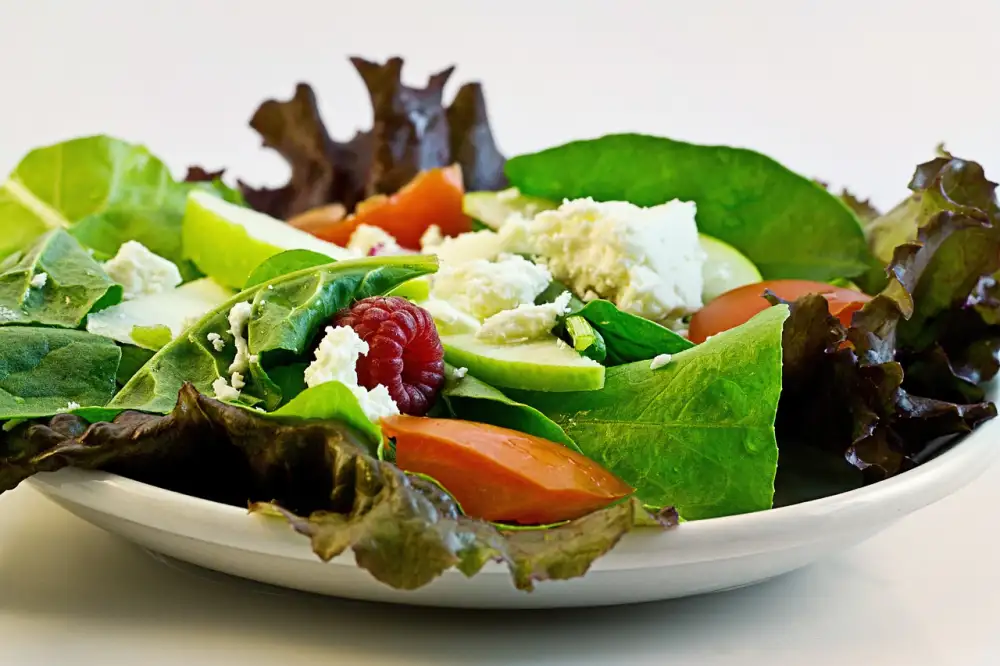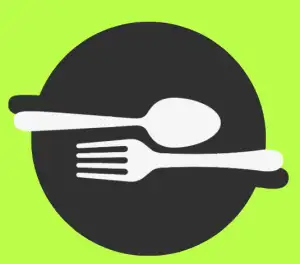Trim Down with Flavorful and Nourishing Weight Loss Meals: Your Path to a Healthier You!

- Understanding the Importance of a Balanced Diet
- Incorporating Lean Proteins into Your Meals
- Adding Fiber-Rich Foods for Satiety and Digestive Health
- Emphasizing the Role of Fruits and Vegetables in Weight Loss
- Choosing Whole Grains for Long-lasting Energy
- Avoiding Processed Foods and Added Sugars
- Portion Control and Mindful Eating for Weight Management
- Healthy Cooking Techniques for Weight Loss Meals
- Meal Planning and Prepping Tips for Success
Embarking on a weight loss journey can be both exciting and challenging. One of the key factors in achieving your goals is adopting a healthy and balanced diet. This means making smart choices when it comes to the foods you eat. Weight loss meals are designed to provide you with the nutrients your body needs while helping you shed those extra pounds. By incorporating flavorful and nourishing ingredients into your meals, you can create a sustainable eating plan that not only supports weight loss but also promotes overall health and well-being. In this article, we will explore various strategies for crafting delicious and satisfying weight loss meals that will keep you on track towards a healthier you!
Understanding the Importance of a Balanced Diet
When it comes to weight loss, a balanced diet is key. It's not just about cutting calories; it's about nourishing your body with the right nutrients. A balanced diet includes a variety of foods from different food groups, providing you with essential vitamins, minerals, and macronutrients.
By eating a balanced diet, you can ensure that your body gets all the necessary nutrients it needs to function properly. This helps in boosting your metabolism, maintaining muscle mass, and promoting overall health and well-being.
A balanced diet also helps in controlling cravings and preventing overeating. When your body receives all the nutrients it needs, you are less likely to feel hungry or deprived, making it easier to stick to your weight loss goals.
Incorporating lean proteins, fiber-rich foods, fruits and vegetables, whole grains while avoiding processed foods and added sugars are all part of a balanced diet. By understanding the importance of a balanced diet, you can make informed choices when planning your weight loss meals for a healthier you!
Incorporating Lean Proteins into Your Meals
Incorporating lean proteins into your meals is essential for weight loss. Not only do they help build and repair muscles, but they also keep you feeling full and satisfied. Opt for lean sources such as skinless chicken breast, turkey, fish, tofu, and legumes. These protein-rich foods are low in calories and high in nutrients, making them an ideal choice for a healthy weight loss meal. Be creative with your cooking methods to add flavor without adding excessive fat or calories.
Adding Fiber-Rich Foods for Satiety and Digestive Health
Adding fiber-rich foods to your weight loss meals is essential for promoting satiety and maintaining digestive health. Foods such as whole grains, legumes, fruits, and vegetables are excellent sources of dietary fiber. Not only do they keep you feeling fuller for longer, but they also help regulate blood sugar levels and promote regular bowel movements. Incorporating these foods into your meals will not only aid in weight loss but also contribute to overall well-being.
Emphasizing the Role of Fruits and Vegetables in Weight Loss
Fruits and vegetables are essential components of a successful weight loss meal plan. They are low in calories and high in nutrients, making them perfect for satisfying hunger while promoting weight loss. Incorporating a variety of colorful fruits and vegetables into your meals ensures that you receive a wide range of vitamins, minerals, and antioxidants. These nutrients not only support overall health but also help to boost metabolism and burn fat. Whether enjoyed raw, steamed, roasted, or blended into smoothies, fruits and vegetables should be the star of any weight loss meal.
Choosing Whole Grains for Long-lasting Energy
When it comes to weight loss meals, choosing the right carbohydrates is crucial. Whole grains are an excellent choice as they provide long-lasting energy and keep you feeling fuller for longer. Unlike refined grains, whole grains retain their natural fiber and nutrients, making them a healthier option. Incorporate whole grain foods such as brown rice, quinoa, whole wheat bread, and oats into your meals to fuel your body and support your weight loss journey. These nutrient-dense options will not only satisfy your hunger but also provide essential vitamins and minerals for overall health.
Avoiding Processed Foods and Added Sugars
When it comes to weight loss, avoiding processed foods and added sugars is crucial. Processed foods are often high in unhealthy fats, sodium, and preservatives, which can hinder your weight loss goals. Instead, opt for whole, unprocessed foods that are rich in nutrients and low in calories. Similarly, added sugars can contribute to weight gain and increase the risk of chronic diseases. Be mindful of hidden sugars in packaged snacks, sugary drinks, and desserts. Choose natural sweeteners like honey or fresh fruits to satisfy your sweet tooth while keeping your calorie intake in check.
Portion Control and Mindful Eating for Weight Management
Portion control and mindful eating are key factors in successful weight management. It's important to be aware of the amount of food you consume and to listen to your body's hunger and fullness cues. Start by using smaller plates and bowls to visually trick your mind into thinking you're eating more. Chew your food slowly and savor each bite, allowing yourself to fully enjoy the flavors and textures. Avoid distractions such as watching TV or scrolling through your phone while eating, as this can lead to mindless overeating. By practicing portion control and mindful eating, you can better manage your weight and develop a healthier relationship with food.
Healthy Cooking Techniques for Weight Loss Meals
When it comes to cooking weight loss meals, the techniques you use can make a big difference in the nutritional value and calorie content of your dishes. Here are some healthy cooking techniques to incorporate into your meal preparation:
1. Grilling: Grilling is a great way to cook lean proteins like chicken, fish, and vegetables without adding extra fat or calories. It also adds a delicious smoky flavor to your meals.
2. Steaming: Steaming is a gentle cooking method that retains the nutrients in foods while keeping them moist and flavorful. Steam vegetables, fish, or poultry for a healthy and low-calorie meal option.
3. Baking: Baking is an excellent technique for reducing added fats. Use parchment paper or non-stick spray instead of oil or butter when baking meats or vegetables.
4. Stir-frying: Stir-frying involves quickly cooking small pieces of food in a hot pan with minimal oil. This method allows you to retain the natural flavors and textures of ingredients while using less fat.
5. Roasting: Roasting brings out the natural sweetness and flavors of vegetables and proteins without adding excessive calories. Use herbs, spices, and citrus juices for added taste instead of oils or sauces.
By incorporating these healthy cooking techniques into your weight loss meal preparation, you can create flavorful and nutritious dishes that support your goals for a healthier you!
Meal Planning and Prepping Tips for Success
To ensure success on your weight loss journey, meal planning and prepping are essential. Here are some tips to help you stay on track:
1. Plan your meals in advance: Take some time each week to plan out your meals. This will help you avoid last-minute unhealthy choices.
2. Make a shopping list: Once you have your meal plan, create a shopping list of all the ingredients you need. Stick to this list when you go grocery shopping to avoid impulse purchases.
3. Cook in batches: Prepare larger portions of healthy meals and divide them into individual servings. This way, you'll have ready-to-eat options throughout the week.
4. Use portion control containers: Invest in portion control containers to help you measure out your meals accurately. This will prevent overeating and ensure proper portion sizes.
5. Prep fruits and vegetables in advance: Wash, chop, and store fruits and vegetables so they're easily accessible when hunger strikes. Having healthy snacks readily available will prevent reaching for unhealthy options.
6. Freeze leftovers: If you have extra servings, freeze them for later use. This way, you'll always have a healthy meal option on hand when time is limited.
7. Invest in quality storage containers: Use BPA-free containers that are microwave-safe and leak-proof to store your prepped meals safely.
By incorporating these meal planning and prepping tips into your routine, you'll be well-equipped to make healthier choices throughout the week while saving time and effort in the process.
In conclusion, creating a sustainable and delicious weight loss meal plan is key to achieving your health goals. By incorporating lean proteins, fiber-rich foods, fruits and vegetables, whole grains, and avoiding processed foods and added sugars, you can nourish your body while shedding unwanted pounds. Additionally, practicing portion control and mindful eating, as well as using healthy cooking techniques, will further support your weight management journey. Remember to plan and prep your meals ahead of time for convenience and success. With these strategies in place, you can enjoy flavorful meals while trimming down and becoming a healthier version of yourself.
Published: 28. 12. 2023
Category: Health



